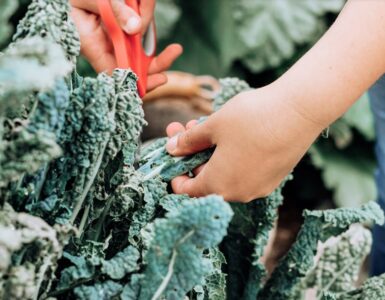The milk from the cows of our dairy farmers is used for a range of dairy products from yoghurt, to ice cream and all your favourite types of cheeses!
Australians have no shortage of options when it comes to cheese, enjoying a countless range of creamy, tasty, sharp and tasteful cheeses.
According to Dairy Australia, the origin of cheese goes back a thousand years and has been a staple part in Australians diet ever since.
The creation of cheese is speculated to have occurred as a happy accident, such as a bowl of milk left in the sun or too close to a fire, or milk carried by a nomadic herdsman in a bag made from the stomach of a young animal.
Whichever process occurred, it resulted in the natural souring of milk, creating curd.
Looking for the perfect type of cheese for your next meal? Dairy Australia breaks down all you need to know about the types of cheese before you next hit the shops!
Fresh unripened cheese
These are the simplest of cheeses. With no rind and a soft and smooth texture, they are high in moisture, generally lower in fat and not pressed. As fresh cheeses have a short shelf life, they have little time to develop any distinctive taste and are delicate and milky in flavour. Fresh cheeses are most often known for their versatility for cooking. Their mild flavour can help to balance bold flavours or complement subtle flavours without overpowering.
Cottage cheese, cream cheese and Neufchatel, feta, quark, marscarpone and ricotta are all examples of fresh unripened cheese.

Stretched curd cheese
These cheeses are often referred to as ‘spun curd’ or ‘string cheese’ because of the way they are made. ‘Pasta filata’ is the traditional Italian name for these types of cheese. To make stretched curd cheeses, the curd is heated in water (70-80°C) until it becomes elastic, then kneaded and pulled into threads.
Each cheese type can be identified by the quantity of moisture in the cheese, its size and shape and the conditions in which it is aged. Some of these cheeses may also fall into the fresh or semi-cooked cheese categories.
Provolone is an example of a stretched curd cheese that is matured. Caciocavallo is a stretched curd cheese that is prepared in the same way as provolone, but it is cured for a short time. The different shapes of the two cheeses are what distinguishes them from each other.
Bocconcini, burrata, halloumi and mozzarella are all types of stretched curd cheese.

White mould cheese
White mould cheeses are creamy, oozy and rich in earthy flavours. They’re identifiable by their delicately mottled rinds. They are surface ripened and aged from the exterior to the interior cheese.
Brie, camembert and triple cream cheese are all types of white mould cheese.

Washed rind cheese
Originating from northern France, this cheese was originally made by monks and carries a meaty flavour. Washed rinds are mostly surface ripened, semi-soft cheeses with a strong aroma and a bright red or orange rind.

Cheddar and cheddar styles
Perhaps the most well-known cheese in the world, it’s also Australia’s most popular. Cheddaring is the name of the process that makes cheddar cheese, which involves pressing whey by stacking blocks of curd on top of each other.
Colby-style or stirred curd, club cheese and processed cheddar are all types of cheddar and cheddar style cheese.

Eye cheese
This cheese is known for its signature holes or “eyes”. They are smooth, supple, and have sweet, nutty flavours. They are either hard-cooked or semi-cooked.

Hard cheese
Hard cheese has a long shelf life due to its low moisture content, and has had time to mature and develop robust, concentrated flavour. It is made by cutting curd finely, then cooking it at high temperatures to remove the amount of moisture removed before placing the curd in hoops.
Pecorino, parmesan, pepato and romano are all types of hard cheese.

Blue cheese
Blue cheese is a unique category of mould ripened cheese, with a naturally crusty rind that forms while it matures in humidity controlled cellars. Blue mould spores are added at the beginning of the cheesemaking process, which creates pungent flavours.
Danish-style blue, blue brie and gorgonzola-style blue are all types of cheese.

Find more interesting facts about your favourite dairy products, as well as a selection of delicious recipes, via Dairy Australia.






































Found the information on Cheeses very informative. Just wished I was able to put the information into my Pinterest Account for fuiture reference.